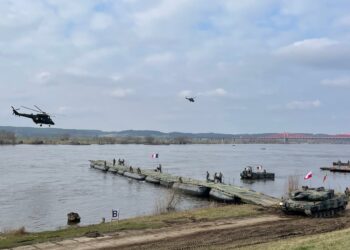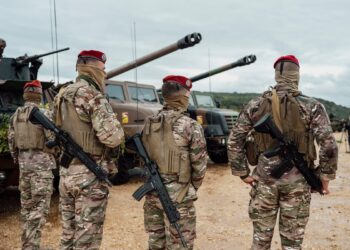**Location and Context**
The French Army held an artillery demonstration at Camp de Canjuers, southeast France, last week amidst heavy rain. This event showcased the challenges of modern warfare, particularly how adverse weather affects operational capabilities. Despite modern artillery being operational, the rain prevented drones from taking flight, highlighting a critical limitation in utilizing unmanned systems in inclement weather.
**Adaptations in Warfare**
This situation mirrors lessons learned in Ukraine, where weather conditions have been strategically exploited by Russian forces to time mechanized assaults. The French Army demonstrated its artillery capabilities with the presence of KNDS arms manufacturer and several foreign military delegations, including plans to adapt its tactics in a drone-dominated battlefield.
**Demonstration Highlights**
The demonstration revealed the challenges aired during inclement weather, such as the grounding of helicopters and drones and operational turbulence affecting artillery fire. The 35th Parachute Artillery Regiment displayed innovative equipment such as truck-mounted 20mm cannons and protective measures, including nets and jammers, to secure their artillery teams.
**Importance of Artillery**
Lt. Col. Renaud Durbecq, operations and training chief of the regiment, emphasized that artillery remains essential despite the growing prominence of drones. He noted that artillery systems, like the Caesar 155mm howitzer, allow for extended range engagements beyond the capabilities of drones. In the face of evolving tactics, the regiment is rapidly increasing its drone fleet and engagement strategies, with five times as many drones compared to the previous year.
**Technological Integration**
One significant advancement is the integration of the Delair DT46 drone into artillery fire-control systems, which enables rapid strike responses upon target detection. The regiment anticipates expanding its drone fleet in the coming year. Moreover, the introduction of six experimental Proteus anti-drone cannons signals a proactive approach to countering unmanned aerial threats.
**Lessons from Ukraine**
Olivier Fort, a former artillery colonel, pointed out several tactical innovations arising from the war in Ukraine. These include prepositioning ammunition to avoid vulnerabilities associated with secondary explosions and using artillery to eliminate protective barriers against drones. Current military practices have shifted to emphasize safety against drone threats, drastically altering how artillery is deployed in combat scenarios.
**Operational Adjustments**
Fort reported alarming casualty rates among artillery pieces in Ukraine. Approximately 75% of artillery losses stemmed from drone attacks, prompting discussion about modifying operational procedures to enhance survivability. This adaptation includes re-evaluating the necessity of armored vehicles in light of their high destruction rate in active combat.
**Training and Preparedness**
The 35th Parachute Artillery Regiment is enhancing its operational readiness by bringing reserve forces into action and conducting extensive training exercises. Understanding the need for sustained combat mass, the regiment has reinstated mortar support teams within infantry units.
**Concluding Observations**
Lt. Col. Durbecq expressed satisfaction with the Caesar system, recognizing its reliability, mobility, and firepower while integrating insights from ongoing conflicts. As modern warfare continues to evolve, the lessons from Ukraine and subsequent tactical adjustments will shape the future capabilities of artillery and drone operations in the French Army.
**Author Information**
Rudy Ruitenberg is a Europe correspondent for Defense News, with previous reporting experience at Bloomberg News and expertise in technology, commodity markets, and politics.













